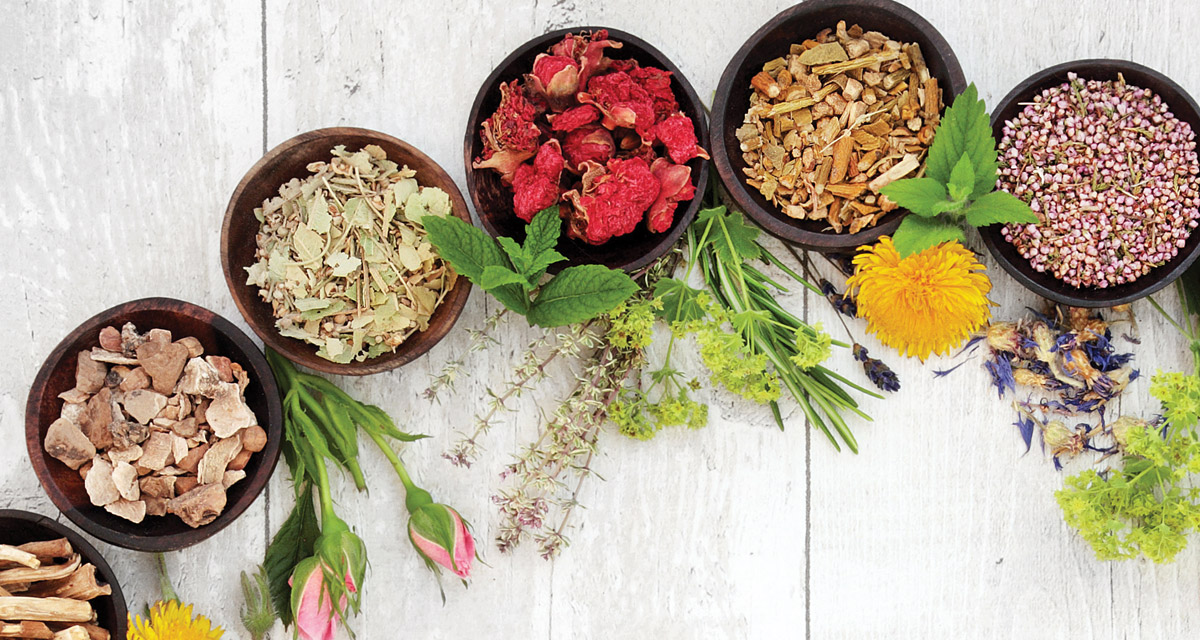January, the time of year when fuzzy slippers, warm clothing, and hot teas define comfort. Perhaps blanketed by snow, the landscape allows the mind to consider the hustle and bustle of the upcoming months. The arrival of the first buds prompts us to take steps to begin the planting season. While the focus at other times of the year is on colorful, vibrant flowers, take the enjoyment factor one step further in winter and consider the medicinal purpose of plants. For thousands of years, men and women have gathered wildflowers, berries, leaves, and bark to make teas and infusions, topicals, syrups, and oils. Despite the steps needed from start to finish, the work can become a therapeutic routine. And the result is wellness.
Start from Seed: Why wait? All seeds need is natural sunlight and daily water to begin the germination process. Start simple. What aromas do you love the most—chamomile, peppermint, or perhaps, basil? Google the phrase, “rare seeds,” and you will discover a small company that will mail healthy, difficult-to-obtain seeds.
A Few Suggestions:
- Be patient during the process from seed to full plants. Some, such as peppermint and lavender, take a lengthy period to transition from a seedling to a plant.
- In the winter months, grow-lights and warming mats are a viable and inexpensive means to invest in gardening.
- Start small. Begin with one type of seeds and add as you feel comfortable. Don’t forget to label your containers!
Learning about the Benefits: The study of herbology is fascinating! Did you know that yarrow, the tall wildflower with clusters of flowers, can stop a cut from bleeding while promoting healing? And, while you may enjoy drinking chamomile tea, it also calms the body while boosting the immune system, encouraging wellness. A favorite flower may be the coneflower, also known as echinacea. The leaves and flowers prevent colds, flu, infections, and heal wounds. By expanding our knowledge of various herbs, we can begin to take a new approach to self-healing beyond seeking just flavor. For instance, basil is an excellent source of vitamins. Thyme is ideal for sickness, since it has antimicrobial, antibacterial, and antiviral properties. And, oregano can also fight off viruses and bacteria.
Creating Medicinal Solutions: Once you have your flowers and leaves in bottles, you can begin to make a viable remedy. If you love flavored water, whether hot or iced, you already have an interest in taking the next step.
Infusion: The process involves pouring boiling water over a tea material, bulk or teabag, and allowing the two to dissolve. In the summer, berries or cucumber-infused ice water makes a delicious drink.
A Recipe for Coughs and Colds: Fill two ounces of a four-ounce Mason jar with fresh thyme or lemon thyme; then pour in four ounces of raw, unfiltered honey. Stir to remove the air bubbles. Screw on the lid and place by a sunny window. After two weeks, strain the thyme and tuck away for future use. If the need is now, place the jar into a double boiler and heat at 180 degrees for 15 minutes. Take by the spoonful, add to tea. This recipe is ideal for kids!
An Aromatic: In place of essential oils, use the actual leaves, flowers, and seeds to create a pleasant household smell.
A Topical: The process of relieving sore muscles or joints is not complicated. It only takes time to infuse.
A Recipe to Increase Circulation: The options are leaves or flowers of peppermint, oregano, cayenne, lavender, or chamomile. Once selected, wash the leaves and chop roughly one inch in diameter to measure ¼ cup. Add to a clean, glass Mason jar. Cover the plants fully with either rubbing alcohol, witch hazel, or 85-proof vodka. Allow to steep for six weeks and shake the contents daily. Strain. Although optional, you can add a pinch of menthol crystals or two drops of essential oil. Label the bottom with the ingredients and a message which includes, “For external use only!” With a Q-tip apply to the areas and allow to dry.
The need to grow plants is intuitive. Is its purpose just for enhancing beauty, or can it serve a medicinal cause? The empowerment provided by growing can improve health and overall wellness. Find a recipe that benefits everyone in the household!























